I’ve been off work this week and hosting a friend. He’s familiar to regular visitors of this site as the Lowlander from 'Across Asia With A Lowlander’ and also my V-log on Schouwen-Duiveland in the Netherlands. We’ve had a great time camping in the Welsh mountains and reminiscing over trips past whilst also contemplating some future expeditions. Mali perhaps…? One day.
Until then please enjoy another trip I took up into tree-covered mountains, this time in deepest, darkest Romania and my unforgettable visit to Sihla Monastery.
Keep travelling!
Uncle Travelling Matt
Links to all parts of the travelogue
Ukraine
Moldova and Transdniestra
Romania
3.4: The Painted Monasteries of Bucovina
3.5: Targu Neamt, Agapia and Sihla
3.7: The Mocanita and Viseu de Sus
3.8: Viseu de Sus to Bucharest
Excursion: Târgu Neamţ, Agapia and Sihla
On the last day of the Moldavian leg of the Missing Link, I took the bus south from Suceava to the small town of Târgu Neamţ. The town’s name seemed to sum up to me much of what I’d learnt about the region so far. ‘Târg’ is the Slavic term for ‘market’ and the word crops up in place names all across the Balkans, such as the northern Bulgarian town of Târgovishte. ‘Neamţ’ has a comes from the Slavic term for the Germans: ‘Nemski’, quite literally ‘the mute ones’, presumably because they stayed silent in the face of alien Slavic babbling. So ‘The German Market Town’ tells us by its name that this area has, like Bessarabia to the east, always been mixed although in these parts there are influences from both the Balkans and Central Europe.
Despite its exciting and exotic name, Târgu Neamţ was one of the dullest towns that I have ever set foot in. Built, it seems, entirely since the 1960s, it is a dusty-grey collection of low-rise concrete blocks. After alighting from the bus I dined in an adjacent eatery which was equally dank and bland and staff by a man whom I christened Mr. Miserable due to his startlingly negative demeanour which soured even further when he presented me with a Coke Zero and I reminded him that I had in fact order the real, sugary, thing.
But my purpose that day was not to stay in Târgu Neamţ; instead the town was merely a springboard for yet more monasteries and so after my meal I hired a taxi to ferry me the 15km or so to the Agapia Monastery.
There’s a beautiful piece on Agapia in ‘Untrodden Paths in Roumania’ by one Mary Adelaide Walker who toured the region in the 1880s. She described approaching the monastery in the following words:
“The little village through which we pass is rather poor looking, but two or three pretty houses, standing back in orchards and gardens, belong, as we afterwards learn, to some of the richer nuns; there is also the school-house, and, passing that, we are soon in a broad lane, bordered by monastic dwellings; in a charming cottage ‘ornée’ style, with wide balconies, and gardens glowing with blossoms. Some of these picturesque retreats are almost hidden by the mass of creepers twining about the white pilasters; others, higher up the slope, peep out of a nest of forest foliage. In the midst of this wild luxuriance, the cupolas of the monastery, covered with glittering scales of burnished metal, and crowned with their numerous and complicated golden crosses, gleam and sparkle against a dark, pine-clad mountain-side; on the summit, an opening in the heavy fringe of trees is marked by a large wooden cross.”[1]
I have to say that, the metalling of the road aside, things have changed little. The monastery that Walker describes in the 1880s was a hive of activity and so it is today, with black-robed nuns milling around busily, although the pilgrims of today – a party of schoolchildren and a fat guy from Stoke-on-Trent – are a world away from the sightseeing and spiritual-seeking members of the Romanian nobility who advanced on Agapia a century and a half ago.
The setting of Agapia is beautiful and so too is the church containing paintings by one Nicolae Grigorescu who was, apparently, the best in Romanian history. They certainly looked ok to me although the church itself was far too baroque for my barbarian tastes. Unfortunately, having seen that church then I realised that I had nothing else to see and my taxi hadn’t waited around.
My guidebook informed me that there is a second monastery some 2.2km away up a hill called Agapia din Deal (‘Agapia on the Hill’ as opposed to the larger Agapia din Vale or ‘Agapia in the Valley’ which was the complex that I was stood in. This other Agapia was described as “quiet” and “humble” and that it “charms with its peaceful ambience and wooden buildings.” However, the book also talked about “the small and highly worthwhile” Sihla Monastery which has a wooden church and a nearby cave of Pious St. Teodora, a hermit who apparently dwelt there as a troglodyte for no less than sixty years. Being a believer that devotion to saints is an excellent way to get closer to the Divine, I plumped for the latter even though the road sign at the turn-off informed me that it was a full 8km away. It did make me stop and think awhile as to whether I really wanted to contemplate such a trek but I decided to go for since, after all, had I not been reflecting only the previous day that, no matter how beautiful or historical they may be, religious sites can only be fully appreciated – or attained – by some hard spiritual and physical exertion.
And besides, I was getting fat.
Perhaps pleased by my choosing the narrow upper road as opposed to the wider downward route, God smiled down on this humble pilgrim and sent an angel down to assist him on his way. Well, not exactly an angel, more a peasant in a red Lada, but almost the moment that I’d started walking, he picked me up and gave me a lift for the first 4km or so before the road split and our ways separated. I bade him goodbye and thanks and then continued on alone, up the mountain, to the Shrine of Pious St. Teodora.
It was a stiff climb, a solid gradient all the way, but the scenery was exquisitely beautiful alpine forest through which the road wended. Only one or two cars passed me as I walked whilst passed a small logging truck but beyond that I was alone and, surrounded by the tall trees, a deep sense of peace began to descend on me. As I laboured up the slopes of the Carpathians, I began to recite prayers and invocations to the saints of my native England whilst all the while keeping my focus on the goal: the monastery which I hoped to attain rather than merely visit.
To be fair, it was a good thing that I did eventually attain Sihla rather than merely visit it since, viewed objectively, whilst my guidebook was right about the setting, architecturally it was rather bland and modern and certainly no match for its companion 8km away down the hill. But after my long trek up some very steep slopes and careful focussing of the mind on the spiritual, to me it seemed like I had entered Heaven itself, (particularly as I’d forgotten to bring a bottle of drinking water with me), and after passing through its gates I baptised myself anew in the holy water that runs from a tap in the compound before drinking down deep gulps and then making my way up to the tiny wooden church.
Like the church in the skansen in Suceava two days previously, I liked this intimate spiritual space and knelt there in prayer for some time. Then, when I had finished, I got talking to the monk in the exonarthex who promptly summoned a younger brother with good English who could answer all my questions.
The church was dedicated to St. John the Baptist, (an obvious inspiration for such isolated hermit monks I suppose), and St. Teodora who had lived in a cave nearby and whose icon I was shown by the brothers. The English-speaker add that, with God’s help, the monastery had managed to stay open and active throughout the communist era, a remarkable achievement although since the place looked largely rebuilt in recent years, I am guessing that it was in a much-reduced form.[2]
I bade adieu to the friendly and helpful monks and set off for the real goal of my journey, the nearby hermit cave of St. Teodora. It is situated about half a mile away from the monastery itself, on a tree-covered hillside. Before reaching the cave itself, one is confronted by a large rock with a set of rickety wooden steps running up the side. Climbing these one reaches a stone trough full of ice-cold water on top of the rock. Tradition tells us that this is the bath in which the saint used to wash everyday.
After descending the steps I continued up the uneven stone path to the cave itself. The setting reminded me strongly of the site of St. Kevin’s hermitage at Glendalough in Ireland although that solitary holy man did not sleep in a cave.
The Cave of St. Teodora was a deep cleft in the rock. It was dark and it took some time for my eyes to adjust. When they did I found myself in a simple, holy shrine with some icons, a trough for candles and a place to kneel. I lit my candle and then placed it in the trough before the icon. Then I knelt and prayed.
I stayed there for a long time. I can’t say how long exactly, I never carry the time with me and in such places time is often not linear. But when I emerged I felt refreshed. The Lord was in that place.
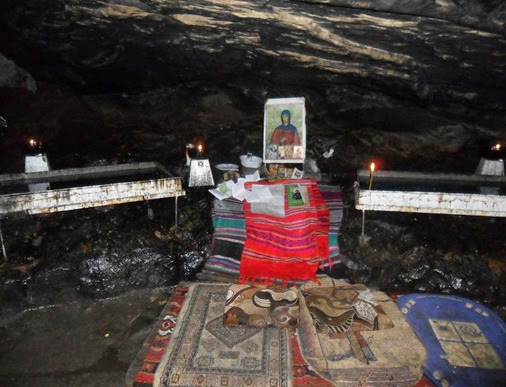 The Cave of St. Teodora of Sihla
The Cave of St. Teodora of Sihla
I then commenced the long walk back down to Agapia, all 8km of it. Of course, going down is much easier than going up, although constantly braking and holding yourself at an unnatural angle is much more wearing than you might think. I did half hope that someone might pick me up as had happened on the way up, but only two cars passed during the entire journey and neither of them showed any sign of stopping.
But it mattered not for it was a beautiful walk, me alone with the forest. I stopped and prayed at the frequent wayside shrines, drank from the mountain streams and relaxed, letting my mind wander over the hills and far away.
About half a kilometre before the monastery, the cottages began; beautiful Hansel and Gretel affairs of latticed wood. When we got into the settlement properly there was a wooden church. I went inside and found that there was a Liturgy in progress with a single nun in attendance. I doubled the congregation and as the words drifted over me, I recalled Rebecca West’s comment on the Orthodox Mass in her classic Balkan travelogue ‘Black Lamb, Grey Falcon’:
‘Here was the unique accomplishment of the Eastern Church. It was the child of Byzantium, a civilization which had preferred the visual arts to literature, and had been divided from the intellectualized West by a widening gulf for fifteen hundred years. It was therefore not tempted to use the doctrines of the primitive Church as the foundation of a philosophical and ethical system unbridled in its claim to read the thoughts of God; and it devoted all its forces to the achievement of the mass, the communal form of art which might enable man from time to time to apprehend why it is believed that there may be a God. In view of the perfection of this achievement, the ecclesiastics of the Eastern Church should be forgiven if they show incompetence in practical matters and the lack of general information which we take for granted in painters and musicians. They are keeping their own order, we cannot blame them if they do not keep ours.’[3]
She was entirely correct.
Back at Agapia itself I dined at a restaurant near to the monastery and then ordered a taxi to take me back to Târgu Neamţ. When I got to the town I discovered that I had two hours to kill in that most soulless of settlements before my bus was due to depart so I decided to head up to the only attraction in town, the castle which according to my guidebook was probably worth a visit since, “A top-to-bottom restoration was nearly finished during our visit and it was reportedly looking fantastic.”[4]
It was a longer walk than I anticipated, easily over a mile and with a very stiff climb at the end of it. My legs, still aching from the 12km of mountain rambling earlier in the day, complained bitterly as I scaled the slope but it was well worth it; the restorations had transformed what must have been a pretty nondescript ruin, (judging by the photos of the pre-restored castle in the exhibition), into one of the best – and most visitor-friendly – mediaeval fortresses in Europe. From the grisly dungeons, (with papier-mâché prisoners chained to the walls), to the guardrooms, to the princess in one of the upstairs windows to the excellent exhibits on the history of the castle to the absolutely incredible views out over Târgu Neamţ and the Carpathians beyond, I loved it to bits and had only two regrets: firstly that my time was short so I had to rush round it all far too fast, and secondly that my son and heir was not with me since he would have loved it. Still, he got something out of my visit since at the bottom of the hill they were selling some rather good quality toy wooden swords in scabbards, one of which he now plays with whenever we visit a castle in Britain.
I finished Jo Nesbø’s ‘The Leopard’ on the bus back and then, in the evening, went to the internet café where I met up with Seb for one last time and printed off my boarding card – my first thought of the slowly approaching end to the trip – before finally retiring to my room to savour a dull 1-1 draw between co-hosts Poland and Russia.
Next post: Suceava to Viseu de Sus
[1] Through Another Europe, p.47
[2] As an aside, several months later I was talking to Fr. Samuel Carter, our local Orthodox priest, who has visited many of Romania’s monasteries and admits that genereally one blurs into the other, but for him, like me, Sihla stood out and indeed he was welcomed by and translated through the same young monk who also helped me. In Fr. Sanuel’s church in Stoke-on-Trent there is an icon of St. Teodora of Sihla.
[3] Black Lamb and Grey Falcon, p.505-6
[4] Lonely Planet Romania, p.268
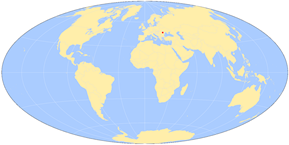
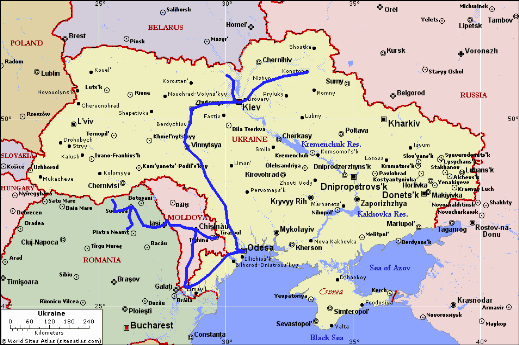
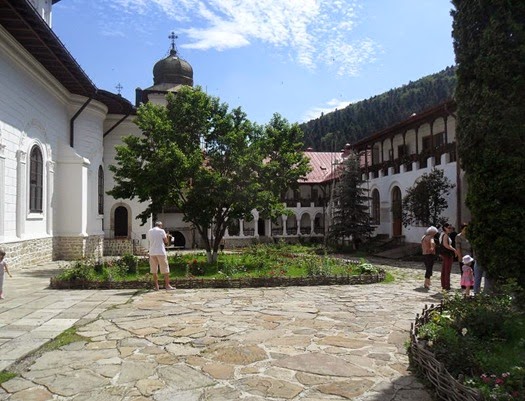
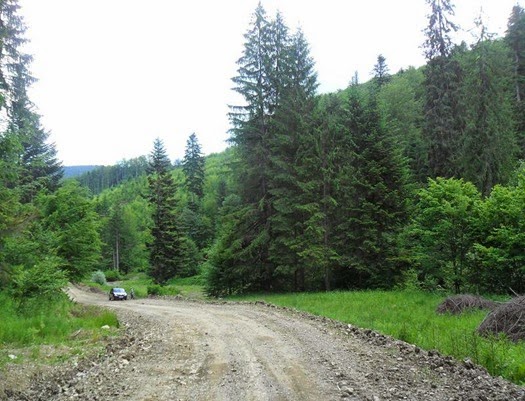
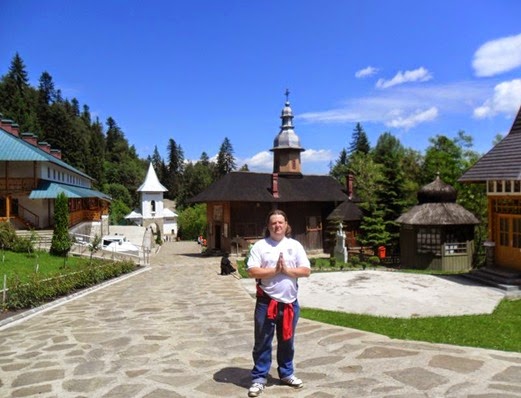

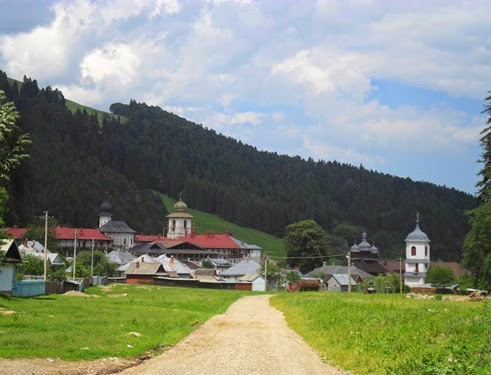
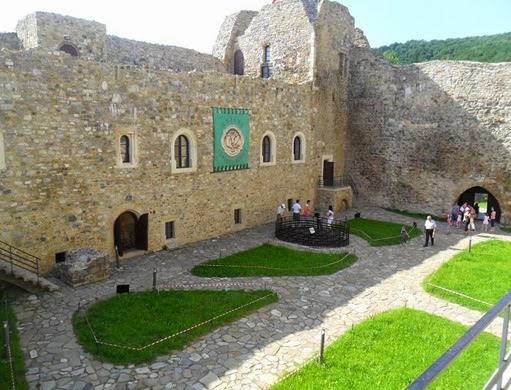
No comments:
Post a Comment